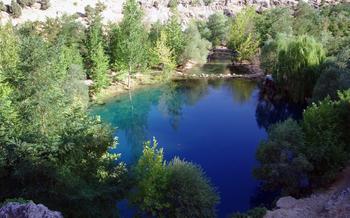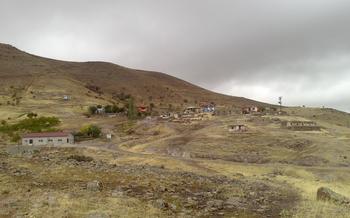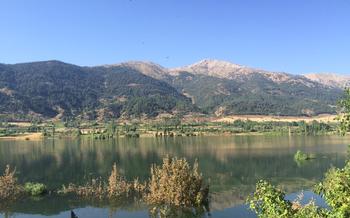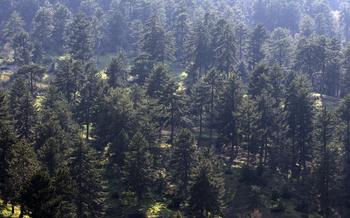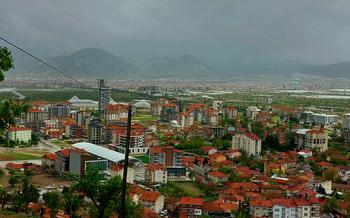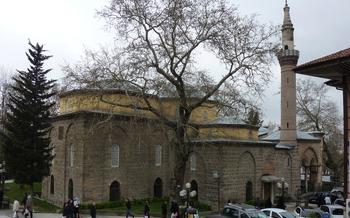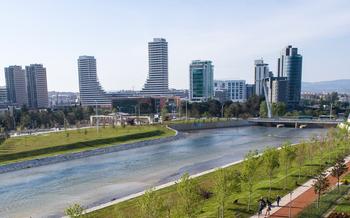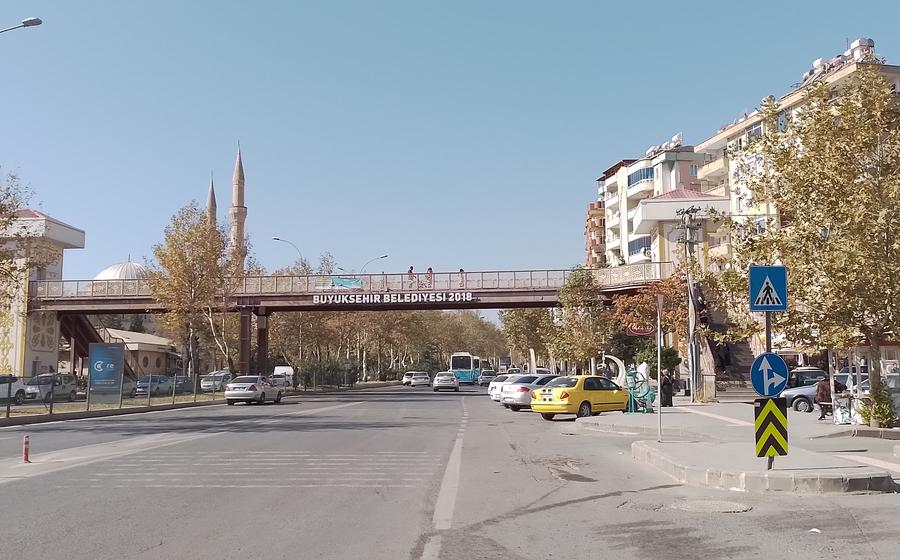
Kahramanmaras Fortress City Walls
- History of the Kahramanmaras Fortress City Walls
- Architectural Features of the City Walls
- Exploring the Fortress Walls
- Panoramic Views from the Walls
- Gates of the Fortress Walls
- Towers of the Fortress Walls
- Legends and Stories of the Walls
- Kahramanmaras Fortress Museum
- Nearby Attractions:
- Photography Opportunities
- Accessibility for Visitors
- Guided Tours
- Cultural Events and Festivals
- Restoration and Preservation Efforts
- Insider Tip:
History of the Kahramanmaras Fortress City Walls
The Kahramanmaras Fortress City Walls stand as a testament to the city's rich history and strategic importance. Constructed in the 12th century under the rule of the Artuqid dynasty, these formidable walls served as a crucial defense mechanism, protecting the city from invaders and ensuring its prosperity. The walls' strategic positioning atop a rocky hill overlooking the fertile plains provided a natural advantage, making Kahramanmaras a formidable fortress. Throughout the centuries, the walls withstood numerous sieges and attacks, bearing witness to the city's resilience and determination to preserve its independence. Today, these majestic walls remain a symbol of Kahramanmaras' enduring spirit and its unwavering commitment to its heritage.
Architectural Features of the City Walls
The Kahramanmaras Fortress City Walls stand as a testament to the city's rich history and architectural prowess. Constructed using locally sourced stone and mortar, these formidable fortifications showcase unique and impressive features. The walls rise to a height of 12 meters, forming an imposing barrier that once protected the city from invaders. Their thickness, ranging from 2 to 3 meters, speaks to their resilience and defensive capabilities.
Along the walls, visitors can admire the intricate details and craftsmanship that went into their construction. The walls feature a series of towers and gates, each serving a specific purpose in the city's defense. The towers, positioned at strategic intervals, provided a vantage point for surveillance and offered additional protection during battles. The gates, adorned with intricate carvings and inscriptions, served as the main entrances to the city and were heavily fortified to prevent unauthorized access.
Exploring the Fortress Walls
To begin your exploration of the Kahramanmaras Fortress City Walls, start at the eastern entrance, which boasts a well-preserved gate known as the "East Gate." From here, you can embark on a captivating journey along the ramparts, traversing through time and history.
The best time to visit the walls is during the spring or autumn months when the weather is pleasant. However, if you seek a captivating spectacle, plan your visit for sunset, as the golden hues of the setting sun cast a magical glow upon the ancient stones, creating a truly unforgettable experience.
A comprehensive tour of the city walls can be completed in approximately two to three hours. As you stroll along the ramparts, take your time to admire the intricate stonework, marvel at the towers and gates that punctuate the walls, and soak in the breathtaking panoramas that unfold before you.
Along the way, be sure to stop at notable landmarks such as the "Watchtower," which offers unparalleled views of the city and the surrounding countryside. Don't miss the "Secret Passage," a hidden tunnel that once served as a strategic escape route during times of siege.
Panoramic Views from the Walls
The Kahramanmaras Fortress City Walls offer breathtaking views of the city and its surroundings, making them a popular spot for photography enthusiasts and sightseers alike. From the vantage point of the walls, visitors can identify prominent landmarks such as the Ulu Mosque, the Grand Bazaar, and the Kahramanmaras Castle. As the sun begins to set, the walls transform into a magical place, with the sky painted in hues of orange, pink, and purple. This spectacle creates a perfect backdrop for capturing memorable photographs that will forever remind you of your visit to Kahramanmaras.
Gates of the Fortress Walls
The fortress walls of Kahramanmaraş are pierced by a series of gates, each possessing its own historical and architectural significance. These gates served as crucial entry and exit points to the city, allowing for the movement of people and goods while providing strategic defense against potential threats.
The most prominent gate is the Zincirli Gate, located on the eastern side of the walls. Its name, meaning "chained gate," alludes to the heavy chains that were used to secure it, symbolizing the city's impenetrable defense system. The Zincirli Gate boasts an impressive architectural design, featuring a pointed arch and intricate carvings that showcase the city's rich cultural heritage.
Another notable gate is the Topuzlu Gate, situated on the northern side of the fortress. Its name translates to "mace gate," referring to the mace-like ornaments that adorn its façade. The Topuzlu Gate is distinguished by its sturdy construction and well-preserved condition, offering visitors a glimpse into the city's medieval past.
The Maraş Gate, located on the western side of the walls, serves as the main entrance to the city's historic bazaar. This bustling gate is a testament to the city's vibrant commercial activity, with merchants and shoppers passing through its archways daily.
Exploring these gates and their surroundings provides a deeper understanding of Kahramanmaraş's rich history and defensive architecture. Visitors can marvel at the intricate details and robust construction of these gateways, which once played a vital role in safeguarding the city and its people.
Towers of the Fortress Walls
The fortress walls are punctuated by an impressive array of towers, each strategically positioned to provide optimal defense and surveillance. These towers stand as testaments to the architectural prowess of the builders, showcasing a variety of styles and designs.
One notable tower is the Şahi Tower, also known as the King's Tower, which stands tall at the eastern end of the walls. Its commanding presence reflects its role as the main watchtower, offering unparalleled views of the surrounding landscape. The intricate carvings and decorative elements adorning the tower's exterior add to its architectural significance.
Another prominent tower is the Zindan Tower, or Prison Tower, located at the western end of the walls. Its somber history as a prison is etched into its walls, adding a layer of intrigue to the fortress's narrative.
The Kızıl Tower, or Red Tower, is another notable structure, named for its distinctive reddish hue. Legends surround this tower, adding to its allure and mystique.
These towers, along with others incorporated into the fortress walls, served as vital defense mechanisms, providing archers and soldiers with vantage points to monitor enemy movements and repel attacks. Their architectural styles and strategic positioning reflect the ingenuity and foresight of the builders, ensuring the fortress's resilience and effectiveness throughout history.
Legends and Stories of the Walls
The Kahramanmaras Fortress City Walls hold a wealth of stories and legends, passed down through generations and woven into the fabric of the city's cultural heritage. One enduring tale tells of a brave warrior named Mehmet, who stood guard at the walls during a fierce siege. As the enemy forces closed in, Mehmet's unwavering resolve and strategic prowess led to a decisive victory for the city. His bravery became legendary, and to this day, locals recount his heroic deeds with pride.
Another popular legend speaks of hidden treasures buried within the fortress walls. According to local lore, a wealthy merchant, fearing invasion, concealed his vast fortune somewhere within the fortifications. Over the centuries, many have searched for this hidden treasure, but none have succeeded. The mystery of the lost riches continues to fuel the imaginations of treasure hunters and locals alike.
These legends and stories are not mere tales but integral parts of the city's identity. They embody the resilience, bravery, and resourcefulness of the people of Kahramanmaras. By delving into these narratives, visitors can gain a deeper appreciation for the city's rich cultural heritage and the enduring spirit of its people.
Kahramanmaras Fortress Museum
Delve into the rich history of the Kahramanmaras Fortress Walls by visiting the Kahramanmaras Fortress Museum, located within the fortress itself. Easily accessible, the museum houses a captivating collection of exhibits that narrate the story of the fortress and its significance through the ages. Artifacts and displays provide a tangible connection to the city's past, shedding light on the construction, defense, and evolution of the fortress walls. Interactive elements enhance the visitor experience, allowing for a deeper understanding of the fortress's role in shaping the city's identity. Explore the museum to gain insights into the resilience and cultural heritage of Kahramanmaras.
Nearby Attractions:
Beyond the fortress walls, Kahramanmaraş offers an array of captivating attractions that enrich the city's cultural tapestry. For history enthusiasts, the Kahramanmaraş Museum, situated a short walk from the walls, houses a treasure trove of artifacts that narrate the city's rich past. The museum's exhibits showcase Neolithic tools, ancient coins, and intricate pottery that provide glimpses into the region's diverse civilizations.
Art aficionados will find solace in the Kahramanmaraş Art Gallery, which exhibits an eclectic collection of contemporary and traditional Turkish art. The gallery's vibrant paintings, sculptures, and installations offer a unique perspective on Turkey's dynamic art scene.
Nature lovers can seek respite in the tranquil surroundings of the Kahramanmaraş Botanical Garden, located on the outskirts of the city. This verdant oasis boasts a diverse array of plant species from around the world, providing a serene escape from the urban hustle and bustle.
To savor the essence of Kahramanmaraş, indulge in the city's culinary delights. The aromatic streets beckon with the tantalizing scents of freshly baked pastries, grilled kebabs, and traditional Turkish desserts. Local restaurants offer a delectable array of dishes that showcase the region's unique gastronomic heritage.
Photography Opportunities
The Kahramanmaras Fortress City Walls present a plethora of captivating vistas and architectural details that allure photography enthusiasts. Ascend to the ramparts to capture panoramic cityscapes, showcasing the intricate tapestry of neighborhoods, minarets, and distant mountains. Explore the walls' nooks and crannies to unveil hidden corners, intriguing shadows, and unique perspectives.
Seek out the optimal lighting conditions for your photography. The golden hues of dawn and dusk cast a magical glow upon the fortress, enhancing its grandeur and creating a painterly ambiance. Experiment with different angles and vantage points to capture the walls' imposing presence and intricate details.
Focus your lens on the weathered stones, worn inscriptions, and architectural embellishments that narrate the fortress's rich history. Capture the interplay of light and shadow as it dances across the ramparts, creating dramatic compositions that evoke a sense of timelessness.
Share your photographic journey with the world, allowing others to experience the beauty and majesty of the Kahramanmaras Fortress City Walls through your captivating images. Let your photographs serve as a testament to the enduring legacy of this architectural marvel.
Accessibility for Visitors
Kahramanmaras Fortress City Walls welcomes visitors from around the world. Ensuring their convenience and accessibility is a top priority.
-
Public Transportation:
The fortress walls are easily accessible by public transportation. Several bus routes stop nearby, and the nearest tram station is just a short walk away.
-
Parking Facilities:
For those arriving by car, ample parking facilities are available in the vicinity of the fortress walls. Designated parking lots provide safe and convenient options for visitors.
-
Wheelchair Accessibility:
The fortress walls are wheelchair accessible, allowing visitors with limited mobility to explore and enjoy the site. Ramps and designated pathways ensure a smooth and accessible experience.
-
Visitor Centers and Information Points:
Visitor centers and information points are strategically located near the fortress walls. These centers provide helpful information, maps, and guidance to visitors, ensuring they make the most of their visit.
Guided Tours
For a comprehensive and enriching experience, consider booking a guided tour of the Kahramanmaras Fortress City Walls. Professional guides, fluent in various languages, lead these tours, offering invaluable insights into the history, architecture, and significance of the fortress. With their expertise, you'll gain a deeper understanding of the walls' role in the city's defense and uncover hidden stories and legends that bring the past to life. Guided tours are highly recommended for first-time visitors or those seeking a more immersive experience.
Cultural Events and Festivals
The Kahramanmaras Fortress City Walls serve as a captivating backdrop for a variety of cultural events and festivals throughout the year. These events provide an excellent opportunity to immerse yourself in the vibrant local culture and traditions. One of the most notable events is the annual Kahramanmaras Fortress Festival, which showcases the city's rich history and heritage through music, dance, and theatrical performances. The festival typically takes place during the summer months and attracts visitors from far and wide.
Other cultural events held near the walls include traditional Turkish music concerts, folklore dance performances, and art exhibitions. These events offer a glimpse into the diverse artistic expressions of the region. For those interested in learning more about the city's culinary heritage, there are food festivals that showcase local delicacies and traditional dishes.
When planning your visit to the Kahramanmaras Fortress City Walls, be sure to check the local event calendar to see if any festivals or events coincide with your stay. This is a wonderful opportunity to experience the city's vibrant culture and connect with the local community.
Restoration and Preservation Efforts
The Kahramanmaras Fortress City Walls have stood tall for centuries, but the relentless passage of time and the elements have left their mark on these ancient fortifications. Recognizing the importance of preserving this cultural heritage, extensive restoration and preservation efforts are underway to ensure their continued existence for future generations.
One of the primary challenges faced by conservators is maintaining the historical integrity of the walls while addressing structural weaknesses and deterioration. Employing traditional techniques and materials, skilled artisans meticulously repair damaged sections, reinforce weakened foundations, and restore the walls to their original splendor.
Beyond physical restoration, preserving the fortress walls also involves safeguarding their cultural significance. Archaeologists and historians delve into the walls' rich past, uncovering new insights into their construction, purpose, and role in shaping the city's identity. Through documentation, research, and education, the walls' stories are kept alive, ensuring that their legacy endures.
Visitors to the fortress walls play a crucial role in supporting conservation efforts. By adhering to designated paths, refraining from touching or climbing on the walls, and respecting the work of conservators, tourists contribute to the preservation of this remarkable site.
Together, through careful restoration, historical research, and responsible tourism, the Kahramanmaras Fortress City Walls will continue to stand as a testament to the resilience and heritage of this ancient city.
Insider Tip:
Venture beyond the main tourist routes to discover hidden gems within the fortress walls. Explore the lesser-known towers and gates, each with its own unique story to tell. For a truly authentic experience, seek out local recommendations for dining near the walls. Savor traditional Turkish cuisine at family-run restaurants and immerse yourself in the vibrant culinary culture of Kahramanmaraş. To avoid the crowds and ensure a peaceful visit, plan your exploration for early mornings or late afternoons when the fortress walls are at their most serene. Embrace the tranquility and soak in the beauty of this historical marvel without the hustle and bustle of daytime visitors.
